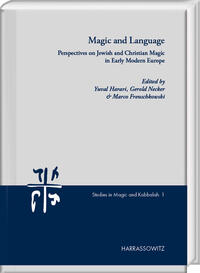
Magic and Language is dedicated to phenomena, texts, and writers with magical affiliations and their interactions with reality, daily life, cultural images, language, ritual, theology, and literature. The sources discussed primarily come from the Renaissance and Baroque periods. Although the main focus of this volume is oriented towards the Jewish frame of reference, it also engages with various Christian views as well as with intercultural interactions in the form of the exchange of perceptions, concepts, and practices in the field. The relationship between “magic and language”—that is, the connection between what is essentially a system of ritual technology and its expression in theoretical writing or as a performative act—is particularly complex and multilayered. It encompasses the very verbal essence of the magic act and its linguistic components, differences between verbal and nonverbal acts, performative speech and writing as opposed to, for example, the listing of information in manuals of know-how, and the coding of language using non-semantic elements such as seals and other performative diagrams. All these aspects and more are the focus of well-known experts and young researchers in Jewish or Christian magic and Kabbalah in this volume.